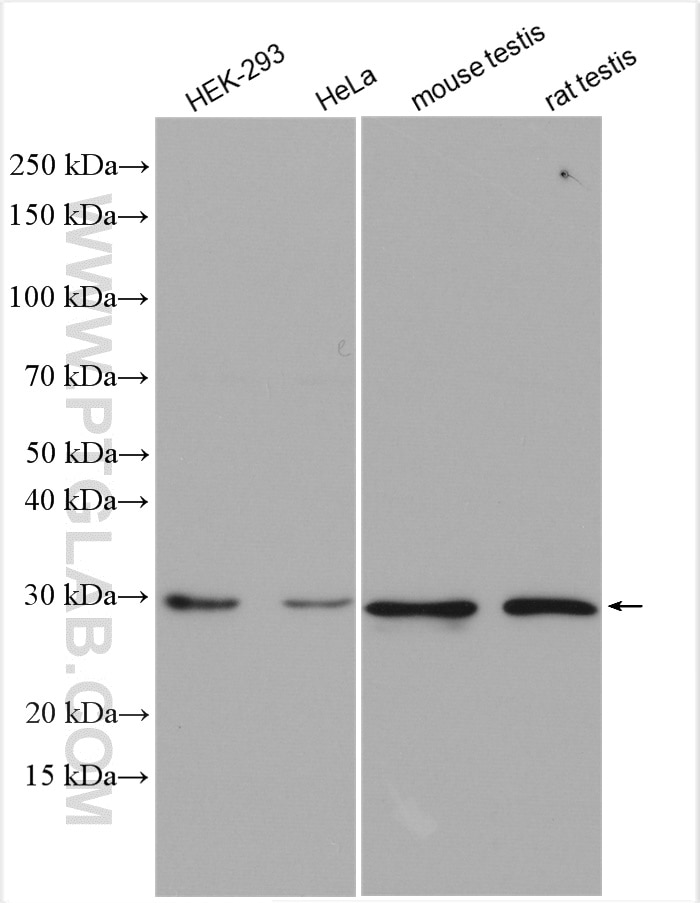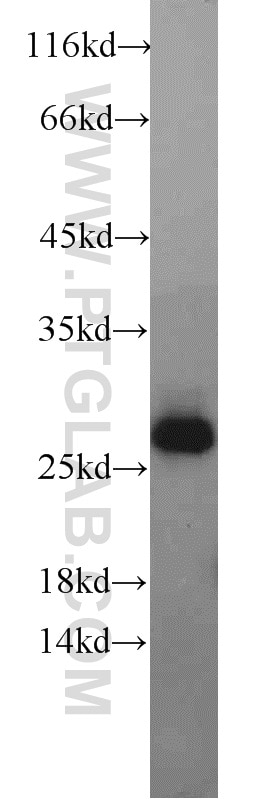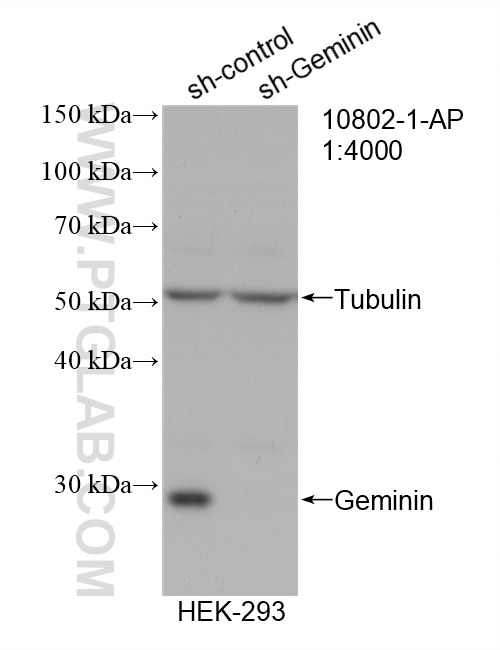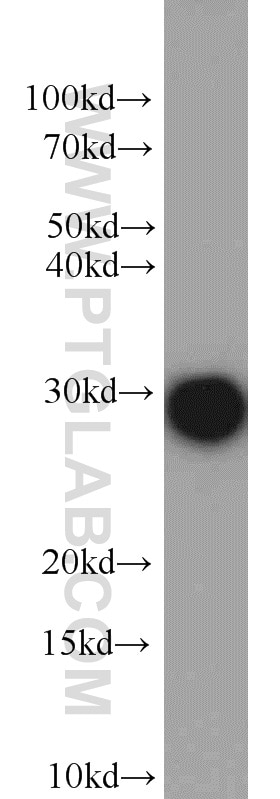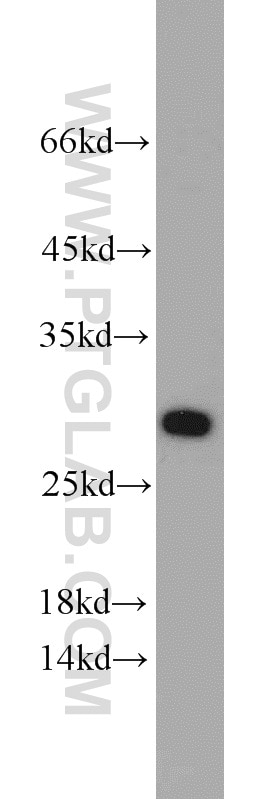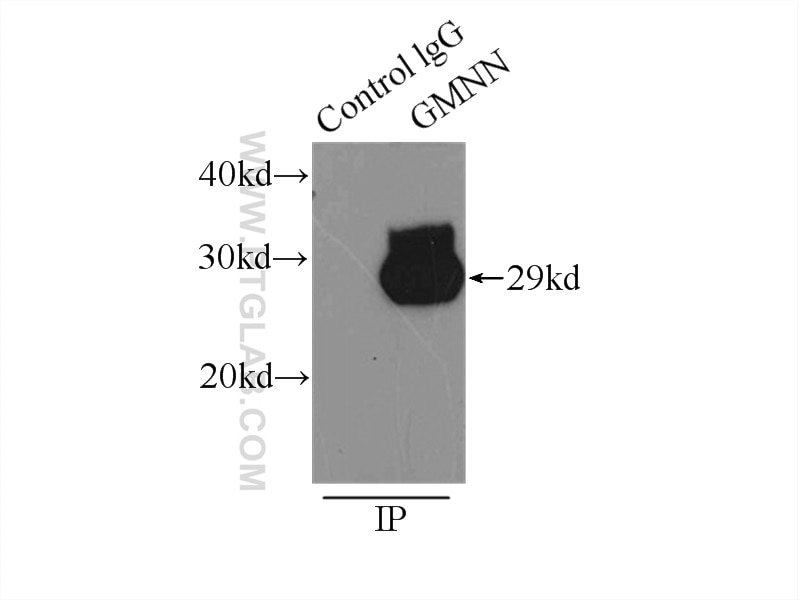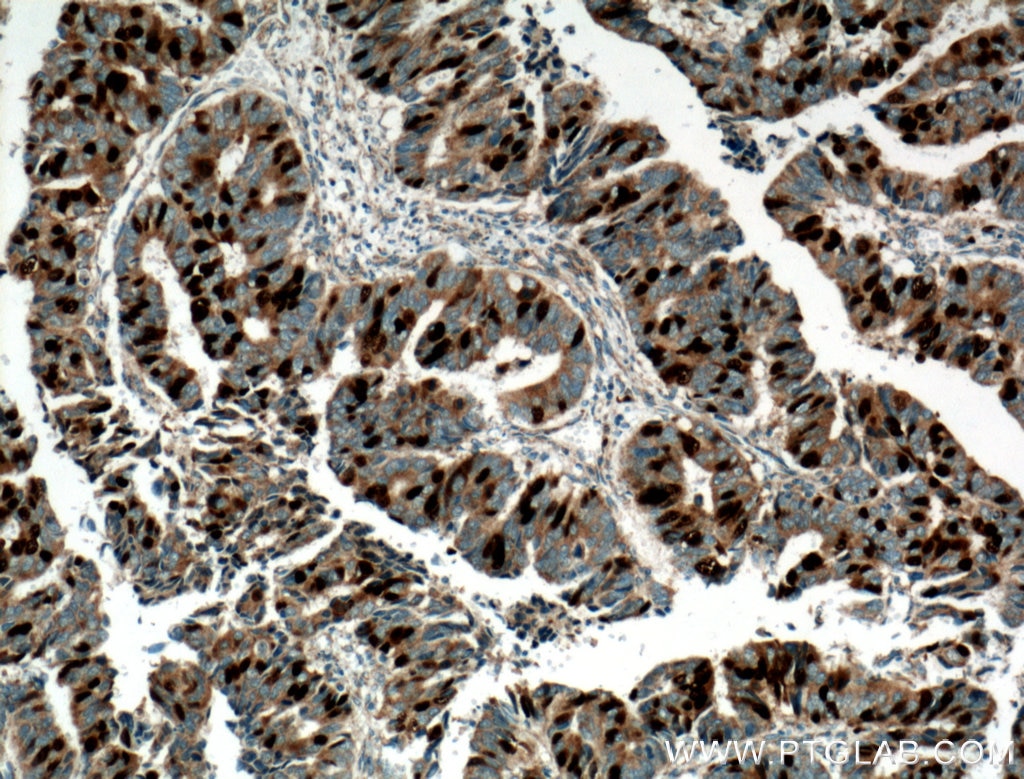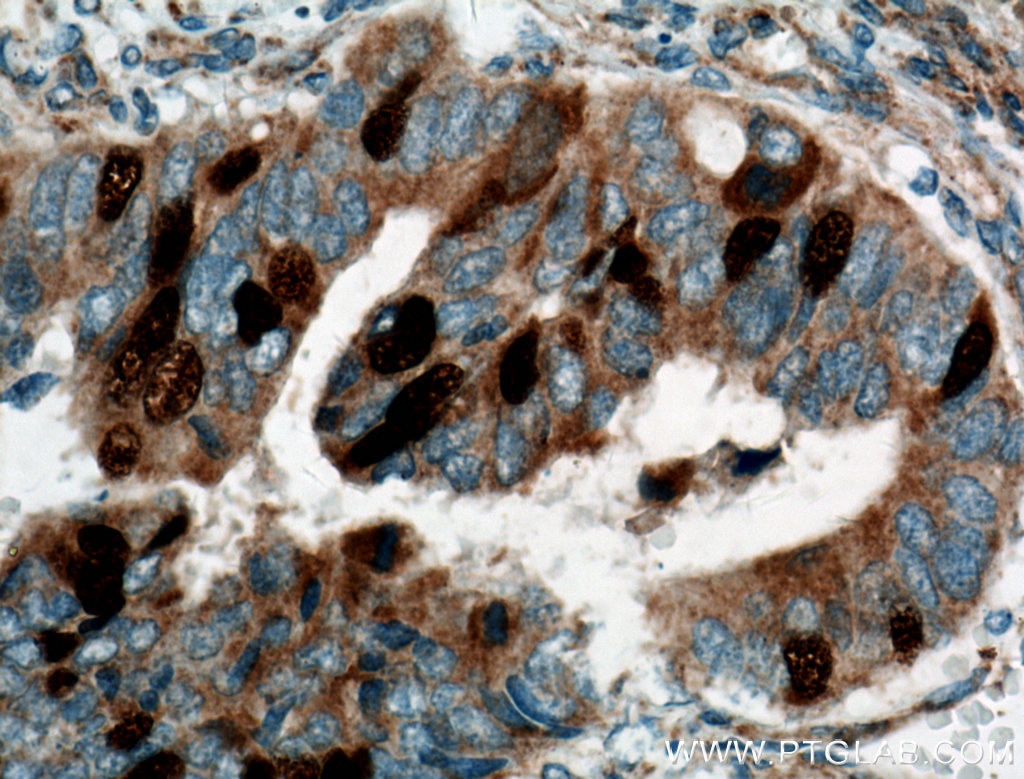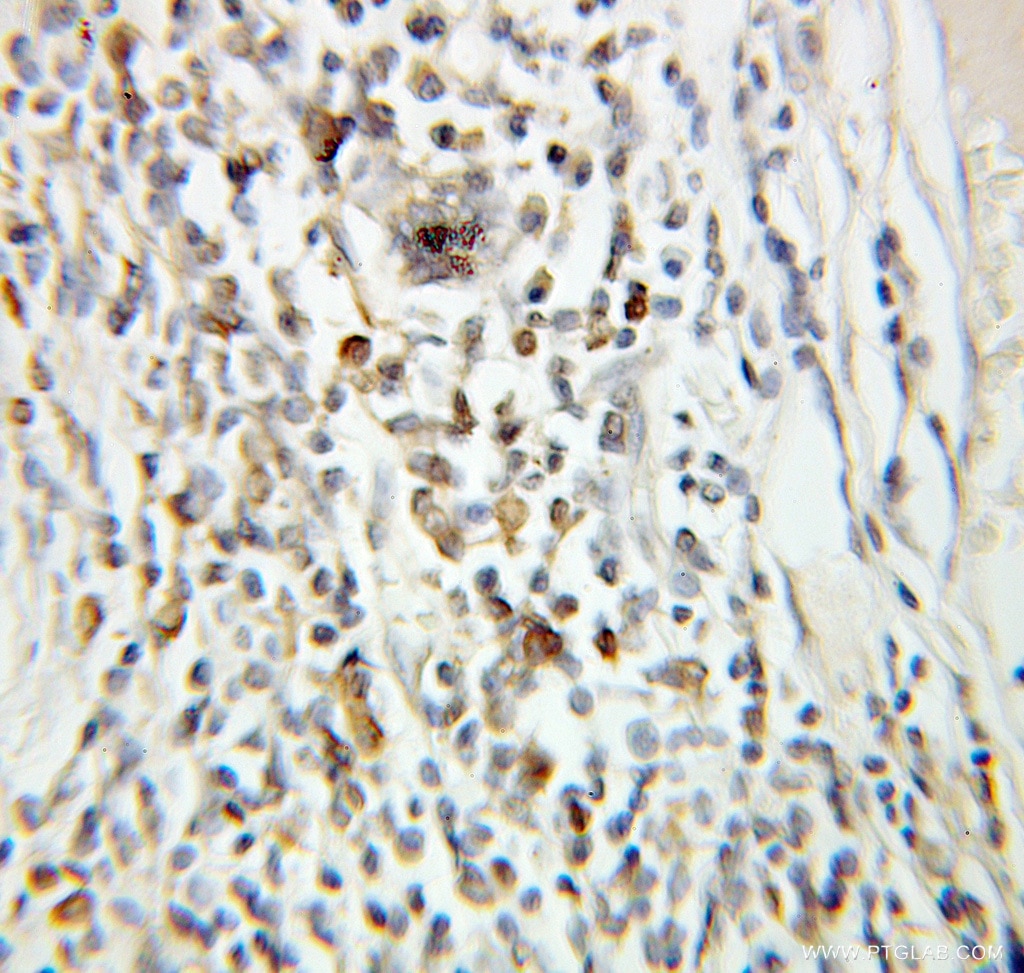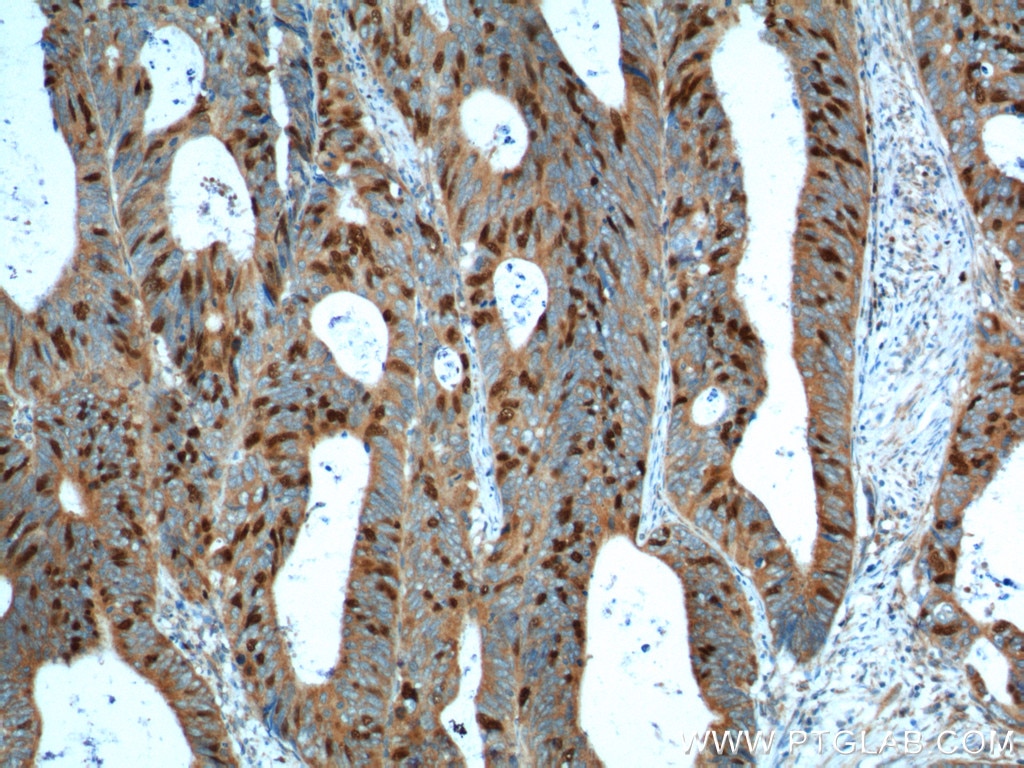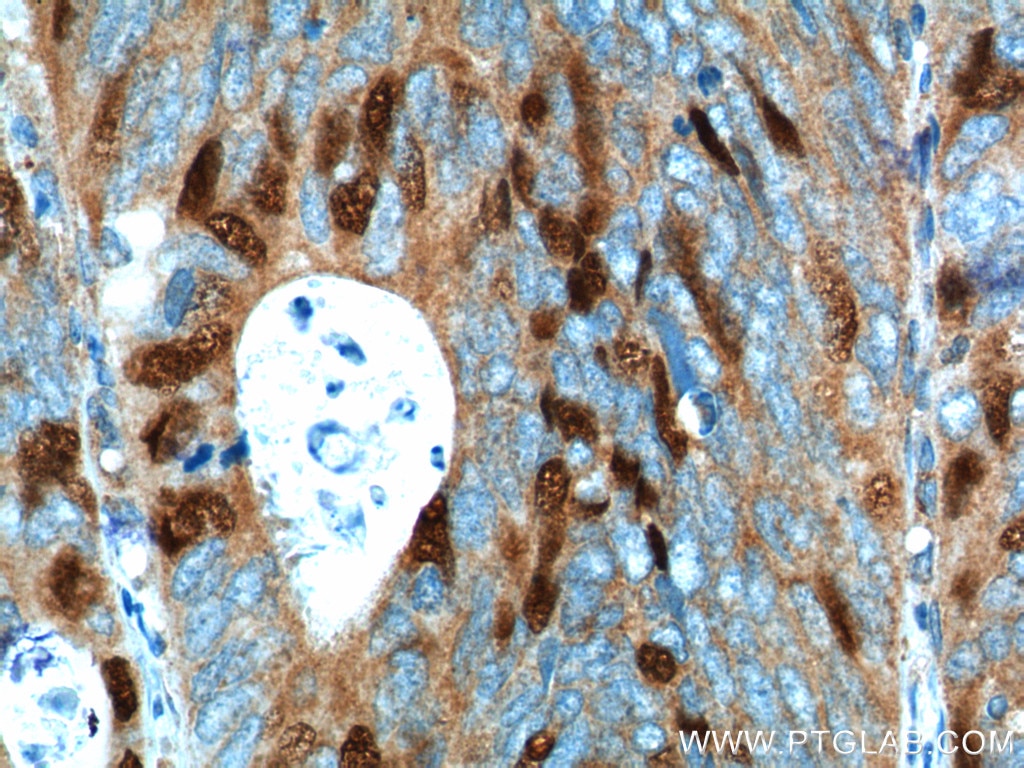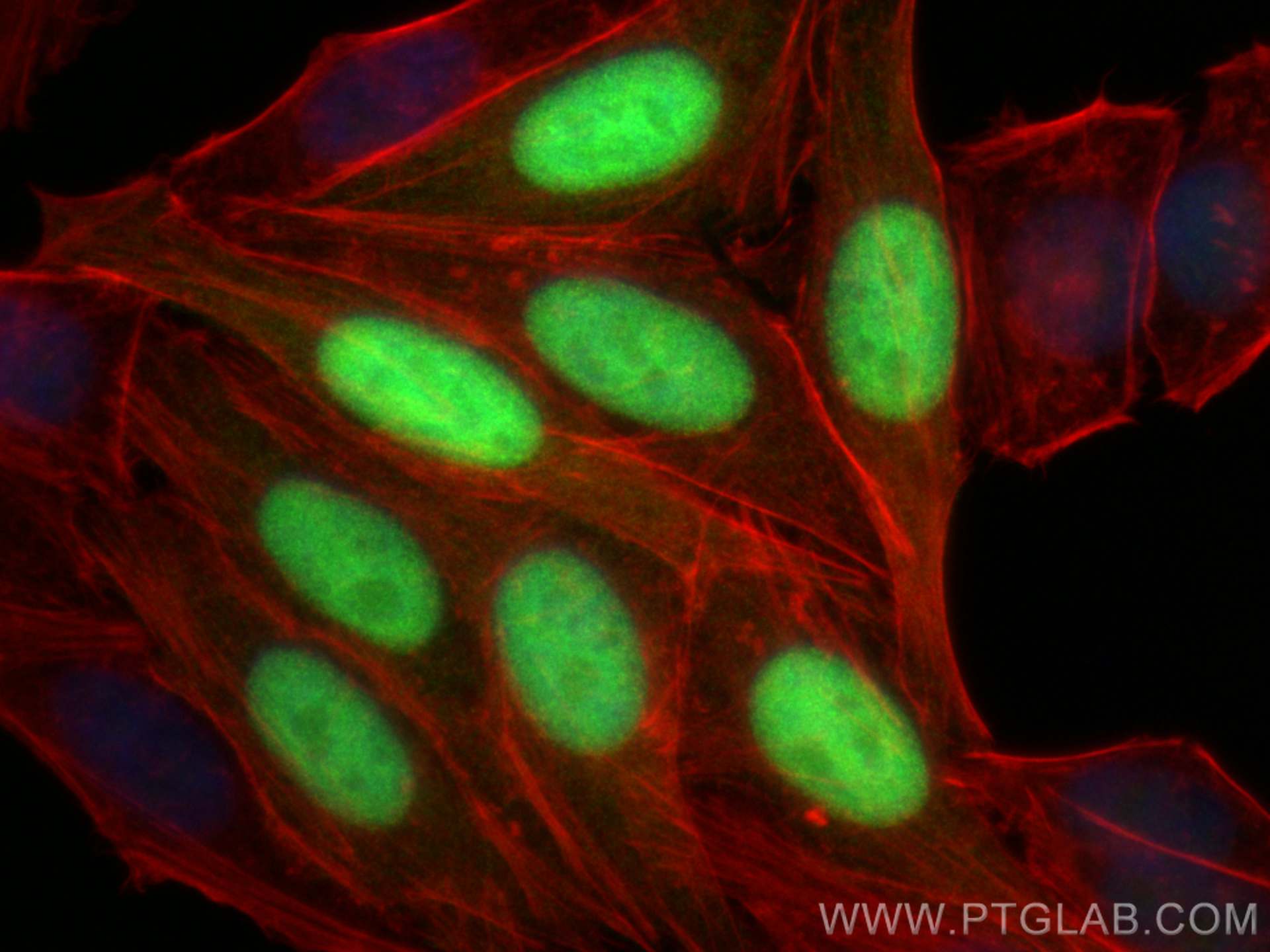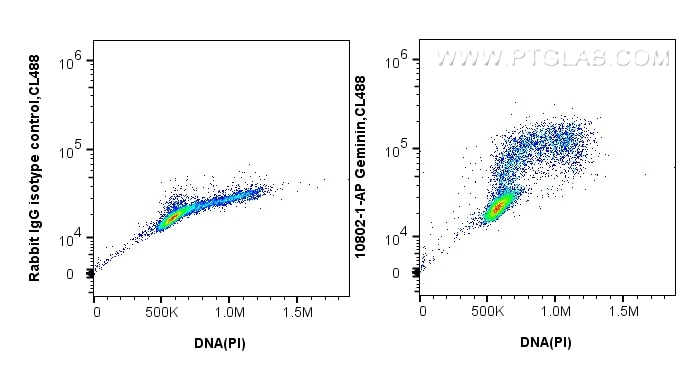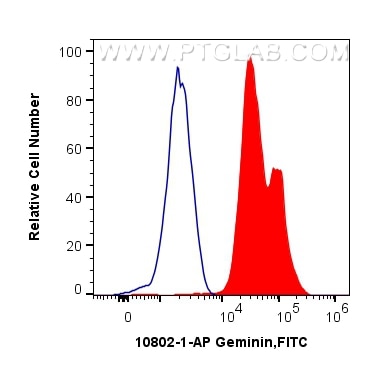- Phare
- Validé par KD/KO
Anticorps Polyclonal de lapin anti-Geminin
Geminin Polyclonal Antibody for WB, IHC, IF/ICC, FC (Intra), IP, ELISA
Hôte / Isotype
Lapin / IgG
Réactivité testée
Humain, rat, souris
Applications
WB, IHC, IF/ICC, FC (Intra), IP, ELISA
Conjugaison
Non conjugué
N° de cat : 10802-1-AP
Synonymes
Galerie de données de validation
Applications testées
| Résultats positifs en WB | cellules HEK-293, tissu testiculaire de rat, tissu testiculaire de souris, tissu testiculaire humain |
| Résultats positifs en IP | cellules HEK-293 |
| Résultats positifs en IHC | tissu de cancer du côlon humain, tissu de cancer du sein humain il est suggéré de démasquer l'antigène avec un tampon de TE buffer pH 9.0; (*) À défaut, 'le démasquage de l'antigène peut être 'effectué avec un tampon citrate pH 6,0. |
| Résultats positifs en IF/ICC | cellules HepG2, |
| Résultats positifs en FC (Intra) | cellules HeLa, |
Dilution recommandée
| Application | Dilution |
|---|---|
| Western Blot (WB) | WB : 1:2000-1:12000 |
| Immunoprécipitation (IP) | IP : 0.5-4.0 ug for 1.0-3.0 mg of total protein lysate |
| Immunohistochimie (IHC) | IHC : 1:50-1:500 |
| Immunofluorescence (IF)/ICC | IF/ICC : 1:400-1:1600 |
| Flow Cytometry (FC) (INTRA) | FC (INTRA) : 0.40 ug per 10^6 cells in a 100 µl suspension |
| It is recommended that this reagent should be titrated in each testing system to obtain optimal results. | |
| Sample-dependent, check data in validation data gallery | |
Applications publiées
| KD/KO | See 1 publications below |
| WB | See 9 publications below |
| IHC | See 12 publications below |
| IF | See 44 publications below |
| IP | See 1 publications below |
Informations sur le produit
10802-1-AP cible Geminin dans les applications de WB, IHC, IF/ICC, FC (Intra), IP, ELISA et montre une réactivité avec des échantillons Humain, rat, souris
| Réactivité | Humain, rat, souris |
| Réactivité citée | Humain, souris |
| Hôte / Isotype | Lapin / IgG |
| Clonalité | Polyclonal |
| Type | Anticorps |
| Immunogène | Geminin Protéine recombinante Ag1076 |
| Nom complet | geminin, DNA replication inhibitor |
| Masse moléculaire calculée | 24 kDa |
| Poids moléculaire observé | 28-29 kDa |
| Numéro d’acquisition GenBank | BC005185 |
| Symbole du gène | GMNN |
| Identification du gène (NCBI) | 51053 |
| Conjugaison | Non conjugué |
| Forme | Liquide |
| Méthode de purification | Purification par affinité contre l'antigène |
| Tampon de stockage | PBS with 0.02% sodium azide and 50% glycerol |
| Conditions de stockage | Stocker à -20°C. Stable pendant un an après l'expédition. L'aliquotage n'est pas nécessaire pour le stockage à -20oC Les 20ul contiennent 0,1% de BSA. |
Informations générales
GMNN, also designated geminin, contains 212 amino acids and has a destruction box sequence (RRTLKVIQP). GMNN participates in inhibiting DNA replication by preventing the incorporation of MCM complex into the pre-replication complex (pre-RC). It is degraded during the metaphase-anaphase transition of cell cycle's mitotic phase, which permits replication in the succeeding cell cycle. GMNN has a broad sedimentation profile ranging from about 25 kDa to 90 kDa, with a major peak at 30 kDa. Scanning of the signals shows that discrete peaks corresponding to the apparent mass of 42.5 kDa and 66 kDa are present. The dimer of geminin(50 kDa) can also be detected. (PMID: 15313623)
Protocole
| Product Specific Protocols | |
|---|---|
| WB protocol for Geminin antibody 10802-1-AP | Download protocol |
| IHC protocol for Geminin antibody 10802-1-AP | Download protocol |
| IF protocol for Geminin antibody 10802-1-AP | Download protocol |
| IP protocol for Geminin antibody 10802-1-AP | Download protocol |
| FC protocol for Geminin antibody 10802-1-AP | Download protocol |
| Standard Protocols | |
|---|---|
| Click here to view our Standard Protocols |
Publications
| Species | Application | Title |
|---|---|---|
Cancer Discov Biomarkers Associating with PARP Inhibitor Benefit in Prostate Cancer in the TOPARP-B Trial. | ||
Ann Oncol Association of RAD51 with homologous recombination deficiency (HRD) and clinical outcomes in untreated triple-negative breast cancer (TNBC): analysis of the GeparSixto randomized clinical trial. | ||
Nat Commun DNA replication initiation factor RECQ4 possesses a role in antagonizing DNA replication initiation | ||
Nat Commun Homologous recombination deficiency derived from whole-genome sequencing predicts platinum response in triple-negative breast cancers | ||
Sci Transl Med BRCAness, SLFN11, and RB1 loss predict response to topoisomerase I inhibitors in triple-negative breast cancers. |
